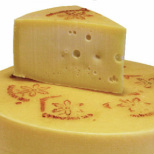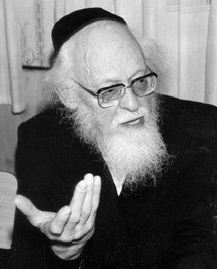LACTOSE, SO YOU THOUGHT IT WAS DAIRY
|
|
|
Although the Shach prohibits eating a combination of whey and meat [Y”D 87:17] this is due to Maris Ayin, since whey appears to look like milk. However, eating them not in combination but after one another, is likely permitted.
|
Water retrieved from the spray dried milk, known in the trade as "cow water", looks, tastes and tests precisely like 100% pure water. According to Halacha however, it is Milchig! Cow water will render industrial food equipment non-Kosher, Chalav Akkum. So speaks the voice of authority on a well known and respected Kosher organisation's website. But this is not the Halacha. Halacha permits us to hang meat above the stove on which milk is being heated. There is no problem with the steam rising from the milk and condensing on the meat as long as the steam is less than Yad Soledes [about 42C] when it gets to the milk. Clearly, the steam condensing from heated milk is not milk. |
Halacha Sees Things Differently
It is not surprising if Kosher consumers mistakenly believe that lactose, being derived from milk, is dairy in the eyes of Halacha. But it is sad to hear of those who should know but don’t, or those who do know but do not wish to disclose, the opinion of Rabbi Elyashiv. Consider the following bold statement: "According to Halacha, a derivative of milk is still milk, and must be labelled dairy accordingly." Lactose is Derived From Whey Whey, known in Halacha as Nisyovay DeChalvah, is rich in protein, lactose and minerals. It is the main by-product of cheese manufacturing. Almost all lactose used in the food industry is extracted from whey. Curds and whey are the products of cheese-making, the curds are made into cheese and the whey is the leftover liquid. By adjusting the pH of the milk and its temperature to optimise the environment for the added cultures and rennet (a naturally occurring enzyme produced in the fourth stomach of calves) milk can be separated into curds and whey. The cheese-maker deftly balances these variables to produce an infinite variety of cheeses. The Kosher Whey Whey is considered by some to be not Kosher if it is derived from non-kosher cheese. So we must firstly verify that all ingredients used to make the cheese are Kosher. Additionally, our Rabbis have decreed that the various coagulating agents must be added by a Jew who strictly follows the laws of kashrus. The milk however, need not be supervised milk, Chalav Yisrael, since according to Halacha, cheese can only be made from milk of behaimos tehoros, kosher species. For the same reason the Shulchan Aruch permits using pure butter produced from non supervised milk for cholov yisroel consumption. |
|
A Different Kosher Whey
Others consider that as long as the ingredients of the cheese are Kosher the whey will also be Kosher. We are not troubled if the cheese is not Kosher because it was not manufactured by an orthodox Jew since our Rabbis’ decree in this matter applied only to the cheese but not to the whey. However, if the whey is exposed to the cheese when it is hot, it will absorb the taste of the non-Kosher cheese and become not Kosher. This is a problem with whey retrieved from Swiss and Mozzarella cheeses. They are heated to temperatures exceeding yad soledes, 49 C thereby absorbing the taam, taste, of the non kosher cheese. Additionally, mozzarella cheese is cooked and stretched in a hot water stretcher (60 C-71 C). This gives mozzarella its elasticity. Whey can also be retrieved from this cook water. However, some Rabbinic authorities maintain that whey requires no Kosher supervision at all. We may Halachically assume that the ingredients are Kosher. Firstly, rennet is usually microbial (i.e. artificial) and even if animal rennet (i.e. non-Kosher origin) was used, it is not a non-Kosher product since it is not food, it is not fit for consumption, eino ra'uy l'achilas kelev. Secondly, as mentioned earlier, cheese can only be made from Kosher milk. Thirdly, the gezaira d'rabonon for gevinas akum only addresses the cheese curds. Where Does One Encounter Lactose? Lactose is often called “milk sugar” and it is used extensively in our calorie conscious world, as a preferred sugar alternative. Additionally it and its many derivatives are used throughout the food industry for many of its other properties. It is cheap because only a few years back it was basically a waste product, something that would have ended up in the slop bucket. But with the rapidly expanded and expanding milk, cheese and yoghurt industries mega-tonnes of waste product, whey, has been reclaimed and is used for producing a broad variety of products, including whey powder, lactose, WPC (Whey Protein Concentrate), DWP (Demineralised Whey Powder) casein and alcohol. Today it is not surprising to find baby foods, dairy products, sweets, bakery and pharmaceuticals and even meat products with this ubiquitous product added as some type of an enhancer either for the final product or to aid in processing along the production line. Pet Foods With Lactose May Not Be Used This is not well known, but cooked combinations of milk and meat may not be used in any way and may not even be traded. They are Assur BeHaNaAh, one must not derive any benefit or pleasure from such products. If lactose and its derivatives are in fact dairy in the eyes of Halacha, then meat cooked with lactose, such as pet food, would probably be prohibited from all use and benefit. What is Lactose Lactose [C12H22O11 molecular weight 342.3 g/mol] makes up around 2-8% of the solids in milk. The name comes from the Latin word for milk and the -ose ending indicates it is a sugar. Infant mammals being fed on milk, produce an enzyme for digestion called lactase (β1-4 disaccharidase) This is secreted by the intestinal villi, and cleaves the milk molecules into its two subunits for absorption. Older Folk Tend to Suffer After Eating a Generous Portion of Ice Cream Lactose occurs mostly in milk, the food for infants, and it is normal for most mammals to cease lactase production with maturity. This also afflicts most adult humans. Consequently, lactose can no longer be metabolised causing those who have a generous portion of ice cream, a fair degree of distress. However, many with ancestry in Europe, the Middle East and India, have a version of the gene for lactase that is not disabled after infancy, and in many of these cultures adults commonly eat plenty of ice cream. Sugar, Not Only a Sweetener Sugar lowers freezing temperatures, giving Slurpees the slushy consistency so adored by weak-kneed consumers. Diet Slurpees, lacking sugar, must be otherwise manipulated. They are often sweetened with a combination of 3 sugar substitutes: sucralose (Splenda), tagatose and erythirtol. Sucralose and tagatose are known as bulk sweeteners, they primarily lower the freezing point and erythirtol is the actual (high intensity) sweetener. Tagatose is present in only small amounts in dairy products. It is commercially produced from lactose, which is first hydrolyzed to glucose and galactose. The galactose is isomerized under alkaline conditions to D-tagatose by calcium hydroxide. The resulting mixture can then be purified and solid tagatose produced by crystallization. Is this sweetener to be considered dairy? Not according to Rabbi Y S Elyashiv but many Kosher certification agencies claim that it is. Foods Using Milk Based Sweeteners Although the amount of tagatose in the whole Slurpee mixture is Halachically insignificant by volume, it is deemed by some to be significant by its effect on either the look or taste. Rabbi Sholem Fishbane has received varying opinions on the issue. It appears that defining what is “significant” is too subjective a value to easily allow unanimity. Some information garnered from http://www.crcweb.org/kosher/consumer/articles/F-slurpees.html http://www.star-k.org/kashrus/kk-palate-whey.htm +++++ [1] Yosef Sholom Eliashiv (יוסף שלום אלישיב) (b. 1910) is a Haredi rabbi and posek (arbiter of Jewish law) who lives in Jerusalem, Israel. Presently well into his nineties, he is active and remains the paramount leader of Israel's Lithuanian non-Hasidic Haredi Ashkenazi Jews (sometimes called by the old label of misnagdim) who regard him as the posek ha-dor (Hebrew: "decisor [of] the generation"), the modern leading authority on halakha, or Jewish law. Family He is a grandson of the famous kabbalist Rabbi Shalom Ben Hayim Haikel Eliashiv (the Leshem) (1841-1925) from Shavel, Lithuania. His father was the noted Rabbi Avraham Elyashiv of Homel. His late wife was the daughter of Rabbi Aryeh Levin. His sons-in-law are:
He does not head a congregation, or a yeshiva, or a community as such, but spends his days in deep Talmudical study, and delivers advanced lectures in Talmud and Shulkhan Arukh at a local synagogue in the Meah Shearim area in Jerusalem where he lives, and receives supplicants from all over the world, answering multitudes of complex Halakhic inqueries. Most rosh yeshivas ("yeshiva deans") associated with the Agudath Israel of America movement actively and frequently seek out his opinions and follow his advice and guidelines concerning a wide array of policy and communal issues affecting the welfare of Orthodox Judaism. Among many Torah scholars, he is also regarded as a Kabbalist, but this aspect of his work is almost never publicly revealed. The Halakhic rulings and insights of Rabbi Eliashiv have been recorded in many books. The multi-volume Kovetz Teshuvos contains the responsa resulting from questions asked of him over the years. His insights on the Torah are in his book called Divrei Aggadah. The material from this book dates to the 1950s. A Haggadah for Pesach including Rabbi Eliashiv's insights and Halachic rulings was recently printed. Another work that published many of his opinions was entitled Yashiv Moshe, but that work included many explanations by its author, which were not necessarily in consonance with the halachic understandings of Rabbi Eliashiv. In 1998, he issued a ruling giving a permit to relocate graves in Jerusalem in order to make a new road. He suffered from angry protestors, who engaged in minor vandalism against his property. |




